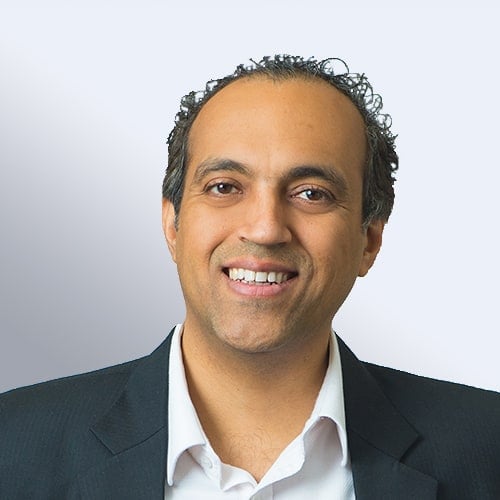
The healthcare outsourcing landscape is evolving rapidly as financial pressures, technological advancements, and regulatory shifts drive payers and providers to rethink their operations.
The outsourcing market is far from immune to these trends, and leading service providers are now actively positioning themselves to stay ahead.
Reach out to discuss this topic in depth.
Based on industry developments over the past 18 months, here are three critical trends shaping the future of healthcare payer outsourcing.
1. Mergers & acquisitions: A market in motion
Investment activity in the healthcare outsourcing sector has surged, driven by financial pressures and technological disruptions—particularly the rise of Generative AI (gen AI). The market remains highly competitive, with firms aggressively building capabilities through acquisitions to fill gaps and strengthen their offerings.
Private equity firms are playing a major role in shaping the landscape, especially in prone to disruption areas such as payment integrity—a critical function in reducing fraud, waste, and abuse. Notable transactions include:
- New Mountain Capital’s US$3 billion consolidation of The Rawlings Group, Apixio’s payment integrity business, and Varis to create a powerhouse leveraging artificial intelligence (AI) to improve payment accuracy.
- KKR-backed Cotiviti’s expected US$3 billion acquisition of Edifecs, aimed at enhancing administrative and clinical data-sharing capabilities.
- Sagility’s acquisition of BroadPath Healthcare Solutions (January 2025), adding over 30 clients and strengthening its claims processing, provider credentialing, and member engagement capabilities.
- TowerBrook Capital Partners and Clayton, Dubilier & Rice’s acquisition of R1 RCM (August 2024): R1 RCM, a healthcare technology company specializing in revenue cycle management, was taken private in a deal valued at $8.9 billion
- New Mountain Capital’s strategic investment in Access Healthcare (January 2025): This investment aims to accelerate Access Healthcare’s transformation of revenue management for healthcare organizations
For outsourcing providers, these moves highlight the importance of building robust capabilities in payment integrity, care management, revenue cycle management, and digital health—whether through acquisitions, partnerships, or internal innovation.
2. Growing adoption of outsourcing by healthcare providers
Historically, healthcare providers have been slow to outsource, but that is changing as rising administrative costs and razor-thin margins push hospitals to seek external expertise.
Revenue cycle management (RCM) remains the most visible area for outsourcing, with hospitals increasingly turning to external firms for financial operations. Some of the most significant provider outsourcing deals in 2024 (source: Beckers Healthcare) include:
- Ensemble Health Partners secured multiple RCM partnerships, including full revenue cycle management services for Independence Health System (PA), Carilion Clinic (VA), Tower Health (PA), and Beebe Healthcare (DE). The partnership with Carilion Clinic involves transitioning 780 employees, while Tower Health will shift 675 employees to Ensemble.
- Conifer Health Solutions, Tenet Healthcare’s RCM arm, expanded its footprint, securing a 10-year contract with five Alabama hospitals and partnering with Adventist Health to manage its revenue cycle services.
- The Brooklyn Hospital Center (NY) signed a 10-year deal with Med-Metrix, transitioning its entire RCM workforce to the outsourcing provider.
- UCI Health’s acquisition of Tenet Healthcare’s Pacific Coast Network included a built-in outsourcing contract with Conifer Health Solutions for revenue cycle management.
Beyond revenue cycle management, outsourcing is expanding into additional areas:
- Clinical documentation & AI-driven coding – Companies like Suki and Nuance are reducing physician documentation burdens with AI-driven solutions.
- Patient engagement & call centers – More hospitals are outsourcing patient outreach and scheduling to improve operational efficiency.
- Prior authorization automation – Firms like Availity are helping providers speed up approvals and reduce administrative burdens.
For service providers, this shift opens new opportunities beyond traditional RCM. Providers are actively seeking automation, AI, and efficiency-enhancing solutions—making it a prime time for innovative outsourcing firms to step in.
3. The rise of partnership-driven ecosystems
To remain competitive, service providers are increasingly forming strategic partnerships to create integrated, end-to-end solutions. These ecosystems bring together diverse capabilities to address the growing complexity of healthcare operations.
Key partnership trends include:
- Data management firms collaborating with tech giants – Healthcare analytics companies are working with platforms like AWS and Google Cloud to develop scalable solutions.
- Service providers teaming up with system integrators – Traditional outsourcing firms are partnering with Big 4 firms and others to offer holistic, technology-enabled solutions.
- Health plans working with AI-driven startups – Payers are leveraging AI and automation to streamline workflows and enhance service delivery.
These partnerships reflect a broader industry move toward comprehensive, technology-driven solutions that combine multiple capabilities to tackle complex healthcare challenges.
What next for the sector?
The healthcare payer outsourcing market is undergoing a major transformation, shaped by a surge in mergers and acquisitions (M&A) activity, increasing provider adoption of outsourcing, and the rise of collaborative ecosystems.
These developments are not just industry shifts—they represent critical signals that service providers must analyze and respond to strategically.
For outsourcing firms, the key question is no longer “What is happening?” but rather “What are we going to do about it?”
- How do these trends impact our competitive position?
- Where do we need to strengthen our capabilities—through investment, partnerships, or acquisitions?
- What gaps exist in our service portfolio, and how do we address them proactively?
- Are we aligning with the technologies and operational models that healthcare organizations are prioritizing?
Standing still is not an option. Service providers that adapt quickly, innovate aggressively, and build the right alliances will be the ones that thrive in this evolving landscape. Now is the time to think critically, make bold moves, and take a leadership stance in the healthcare outsourcing market.
If you found this blog interesting, check out our Optimizing Pricing Strategies For Healthcare AI Startups: Expert Insights For Payer And Provider Innovation | Blog – Everest Group blog, which delves deeper into another topic regarding the healthcare sector.
If your interested in hearing more about healthcare outsourcing trends in 2025 and beyond, please reach out to Ankur Verma ([email protected]).










